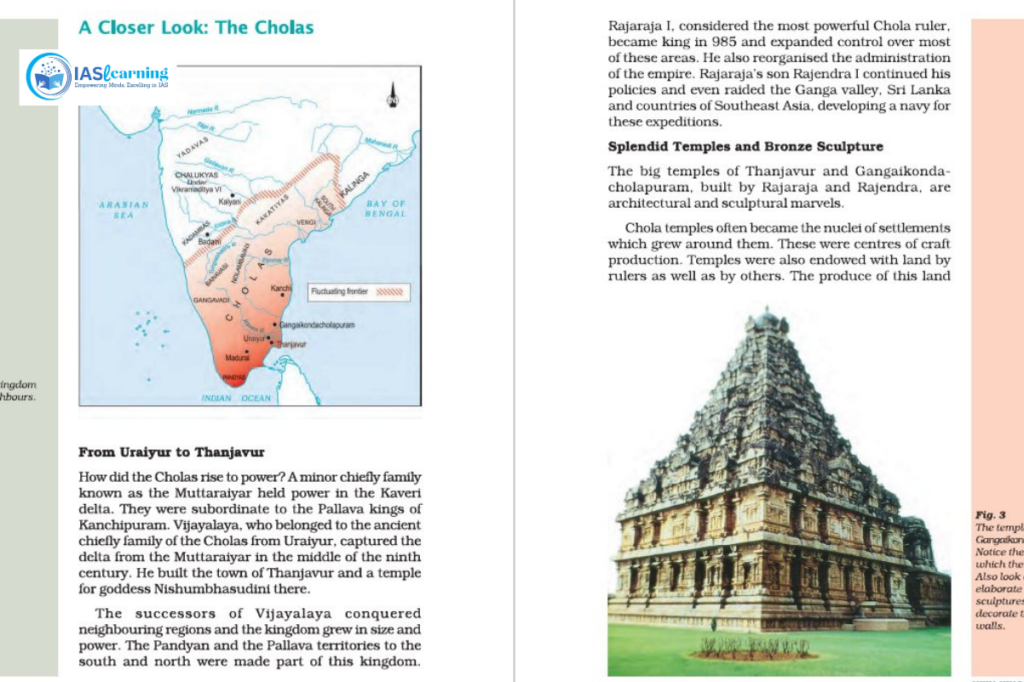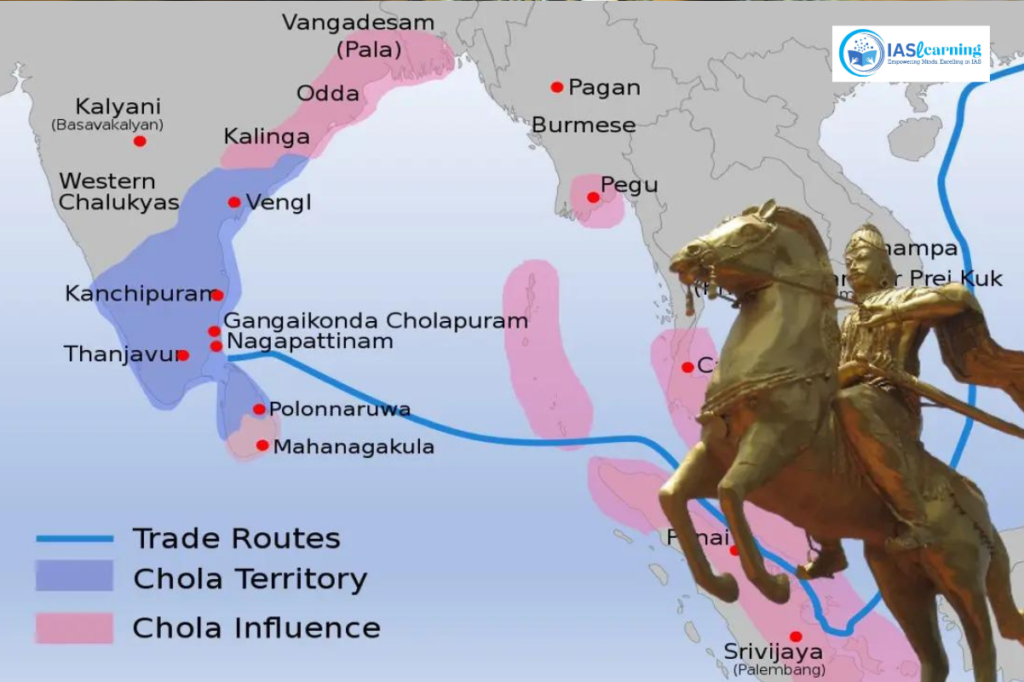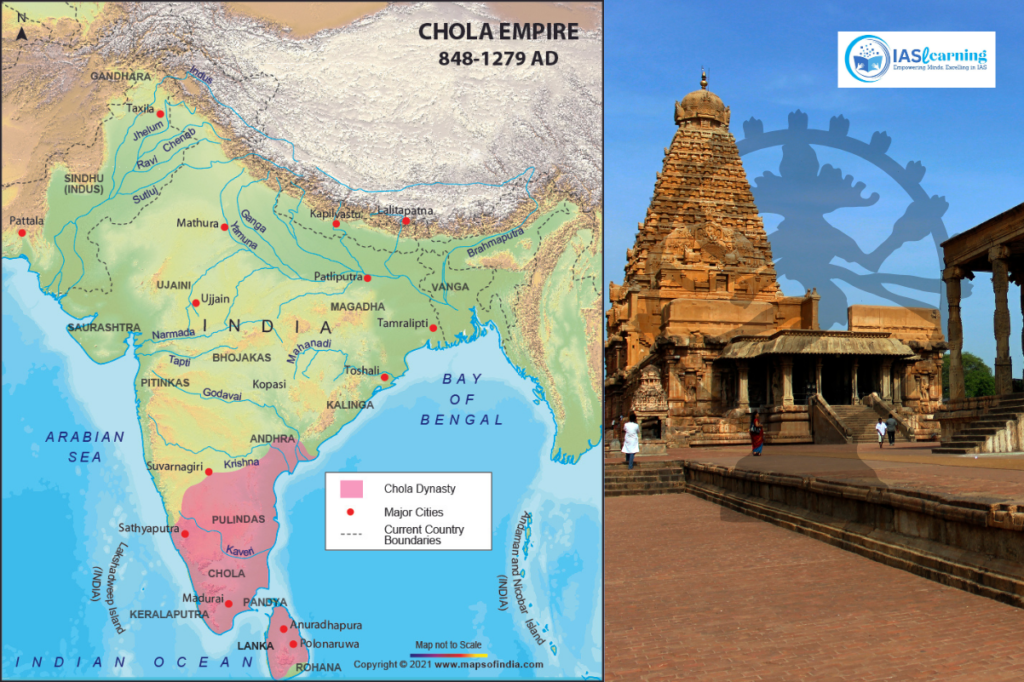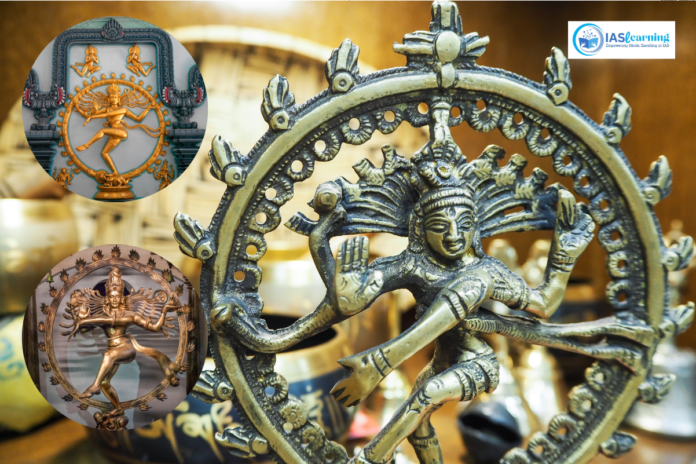Context
The world’s tallest Nataraja statue was installed at Bharat Mandapam, the venue of the G20 summit in Delhi.
About the Nataraja statue
- Size and Weight: The statue stands at an imposing height of approximately 27 feet, making it a significant and eye-catching monument. Its substantial weight is estimated at around 18 tonnes, adding to its grandeur.
- Sculptor: The skilled sculptor responsible for creating this statue is Radhakrishnan Sthapathy. His craftsmanship and artistic talent played a crucial role in bringing this monumental piece to life.
- Location: The statue was crafted in the Thanjavur District of Tamil Nadu, India. This region has a rich tradition of art and sculpture, and it is known for producing exceptional artisans and sculptors.
- Material and Method: The statue was crafted using the traditional lost wax casting method. What makes it even more remarkable is the material it is composed of. It is made from Ashtadhatu, which is often referred to as octo-alloy. This alloy combines eight distinct metals: gold, silver, copper, lead, zinc, tin, iron, and mercury. The use of such a unique and intricate alloy adds an element of complexity and artistry to the statue’s creation, underscoring the craftsmanship involved in its making.

Nataraja Statue
The Nataraja statue is a symbol of profound significance in Hinduism, representing Lord Shiva in his role as the ‘Lord of Dance.’ This iconic depiction encapsulates the cyclical nature of creation and destruction within the universe, a fundamental concept in Hindu cosmology.
- Cosmic Dance: Nataraja’s dance embodies the cosmic rhythm, symbolizing the perpetual cycle of creation, preservation, destruction, veiling, and grace – the five activities of Lord Shiva known as panchakrityas. This dance represents the dynamic and ever-changing nature of the cosmos.
- Chola Dynasty and Patronage: The Cholas, a prominent South Indian dynasty, revered Lord Shiva as Nataraja, considering him their family deity. It was under the patronage of the Chola dynasty that the Nataraja sculpture gained worldwide acclaim.
Evolution of Nataraja Statue:
- Pallava Period (7th-9th century CE): The earliest bronze representations of Shiva can be traced back to the Pallava period. These sculptures were characterized by close-set and linear features.
- Chola Dynasty: The Nataraja sculpture, in its renowned form, developed significantly under the patronage of the Chola dynasty. Chola craftsmen created figures that were dynamic and flared, emphasizing the graceful movement of Lord Shiva in his dance.
Prominent Patron: In the 10th century, Sembiyan Maha Devi, a widowed Chola queen, became a distinguished patron of Nataraja sculptures. Her support played a pivotal role in the development and popularity of this artistic representation.
Associated Temples:

- Thillai Nataraja Temple, Chidambaram: This temple in Chidambaram, Tamil Nadu, is known for its bejeweled image of Nataraja. Parantaka I, a ruler of the Chola dynasty, is associated with the temple and is credited with providing its Vimana (roof) with a golden covering. The temple is particularly noteworthy as it is located at the geographic center point of the world’s Magnetic Equator.
- Uma Maheswarar Temple, Konerirajapuram: Nataraja idols and sculptures can also be found at this temple.
- Brihadeeswara Temple, Thanjavur: Another prominent temple in Tamil Nadu with Nataraja representations.
- Natana Sabha: Many Shiva temples in southern India have a designated Natana Sabha, a place where the image of Nataraja is traditionally kept, emphasizing the significance of his dance in the Hindu religious and artistic context.
Art and architecture under Chola dynasty
The Chola dynasty in South India left an indelible mark on the world of art and architecture during its reign. Their contributions encompassed a wide array of creative endeavors, from bronze sculptures and paintings to music, dance, and temple architecture.
Sculptures:
- Bronze Sculptures: The Chola period is particularly renowned for its mastery of bronze sculptures. These sculptures were created using the cire perdue, or lost-wax casting technique, a method still practiced in India and other parts of the world. In this process, molten metal is poured into a clay mold formed from a wax model. Once the mold is complete, the wax model is melted and drained away, leaving behind the metal sculpture.
- Distinct Features: Chola bronze sculptures often featured holes at the bottom, possibly for mounting or attaching them to other objects or structures.
Paintings:
- Realistic Paintings: The Chola era also witnessed the flourishing of painting, characterized by a commitment to realism. Paintings on themes from the Puranas adorned the inner walls of temples like the Raja Rajeswara Temple and Gangaikonda Cholapuram Temple. Notably, there is a painting believed to depict Marco Polo in the Brihadeeswarar Temple.
Music and Dance:
- Musical Instruments: The Chola dynasty embraced music and dance, with a variety of musical instruments such as kudamula, veena, and flute in use. Devadasis, skilled musicians and singers, played an essential role in the cultural life of the Chola period.
- Bharatnatyam: The classical dance form of Bharatnatyam is believed to have thrived under Chola patronage. It remains a significant and influential dance form in South India and beyond.
Temples:

- Categorization: Chola temples can be broadly categorized into two groups based on architectural influence. The early temples were influenced by Pallava architecture, while the later ones exhibited Chalukya influence.
- Architectural Style: The Chola temples predominantly adhered to the Dravidian architectural style, characterized by towering entrance towers (Gopuras) and Vimanas (structures over the inner sanctum). These temples often had high boundary walls surrounding them.
- Key Features: Chola temples consisted of the grabhgriha (inner sanctum) and antarala (vestibule). They were known for their immense size, with the Vimanas or Gopuras dominating the landscape. Gneiss and granite blocks were the primary raw materials used in their construction.
- Prominent Examples: Notable Chola temples include the early group’s Vijayalaya temple and the later group’s Brihadishwar temple in Thanjavur and the Brihadishwar temple in Gangaikond cholpuram. These temples continue to stand as architectural marvels and cultural landmarks.
FAQs
- What does the Nataraja Statuerepresent?
- The Natraj statue represents Lord Shiva in his role as the cosmic dancer, symbolizing the cosmic cycles of creation and destruction. The dance is called the “Ananda Tandava,” which translates to the Dance of Bliss.
- What are the key elements of the Nataraja Statue?
- The Natraj statue typically features Lord Shiva dancing within a circle of flames, representing the cosmic fire that destroys and recreates the universe. Shiva is depicted with multiple arms, holding various symbolic items.
- What do the various elements in the hands of Natraj symbolize?
- The items in Shiva’s hands, such as the drum (damaru) and the fire (representing destruction), symbolize the cosmic rhythm and the cycles of creation and destruction.
- Why is the Nataraja Statue significant in Hinduism?
- The Natraj statue is significant because it embodies the dynamic and cyclical nature of the universe, a central concept in Hindu philosophy. It represents the eternal dance of creation, preservation, and destruction.
- Where is the Nataraja Statue commonly found?
- Natraj statues are often found in Hindu temples, particularly those dedicated to Lord Shiva. They are also popular as decorative pieces and art installations, both in India and around the world.
- What is the historical significance of the Nataraja Statue?
- The depiction of Shiva as Nataraja has ancient roots in Indian art and mythology. The Chola dynasty in South India, particularly during the Chola period (9th to 13th centuries), is famous for creating exquisite bronze Natraj statues.
- Are there different styles of Nataraja Statue?
- Yes, there are various styles of Natraj statues based on regional artistic traditions. Different artists and regions may emphasize certain aspects of the dance or include unique details in the depiction.
- Is there a specific dance associated with the Natraj statue?
- The dance associated with the Natraj statue is the Ananda Tandava, a dance of bliss. It symbolizes the cosmic cycles of creation, preservation, and destruction, as well as the transcendence of worldly illusion.
- Can the Natraj statue be found outside of India?
- Yes, Natraj statues are not limited to India and can be found in various places around the world, especially in regions with a significant Hindu population or an interest in Indian art and spirituality.
- Is there a specific festival associated with the Natraj statue?
- While there isn’t a specific festival dedicated solely to the Natraj statue, Lord Shiva is celebrated during the festival of Maha Shivaratri, where devotees often engage in prayer, meditation, and cultural performances that may include depictions of the Nataraja dance.

